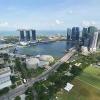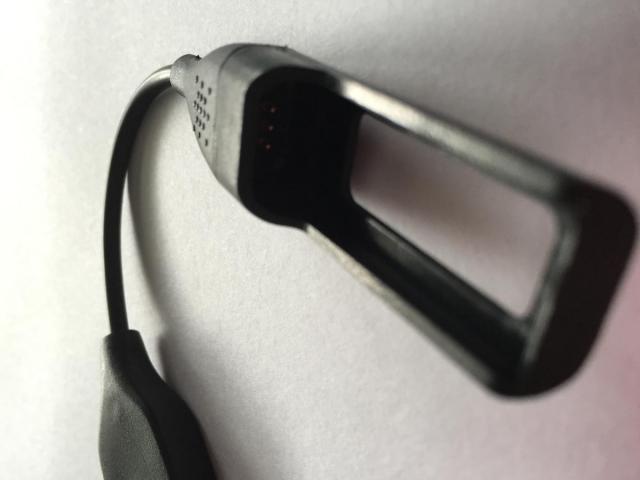Search the Community
Showing results for tags 'idea'.
-
Bad idea to let cyclists ride into mallSources: https://www.straitstimes.com/forum/letters-in-print/bad-idea-to-let-cyclists-ride-into-mall The new Funan mall will feature a 200m cycling path that runs through and around it.ST PHOTO: LIM YAOHUI I read with shock and dismay about how the new Funan mall will allow cyclists to cycle in the mall (New Funan mall lets cyclists ride through it, May 22). This is a very dangerous idea as customers shopping at the mall will be at risk of injury. Who will monitor the cyclists so they do not speed or ride recklessly? It is bad enough that pedestrians have to deal with reckless and speeding cyclists. Now, even mall customers have to deal with these dangerous riders. Furthermore, these cyclists will jostle with customers and ride their bikes into lifts, causing a lot of inconvenience. For safety reasons, cyclists must not be allowed into malls. Can't they park their bikes and walk in the shopping centre like everyone else? Hopefully, other malls will not take Funan mall's cue. I, for one, will not patronise a mall that allows cyclists to ride around in it. My safety is more important than my shopping. This will encourage me to shop online more and avoid malls. Susan Tan Lin Neo
-
Airlines - in the name of security in the air, generally airlines replaced metal utensils to plastics, this is very evident in the economy class. However, in many airlines, I still continue to see metal utensils being used in First and Business class. I am assuming they found that terrorists often travel economy class. Any explanation for this observation?
- 48 replies
-
- 5
-

-
- interesting
- questions
-
(and 5 more)
Tagged with:
-
Read this in ST forum http://www.straitstimes.com/STForum/Online...ory_517867.html What this guy proposed, those current normal plate cars owners who never kenna ERP daily like me will convert to OPC. Then the scheme is not OPC. it's Non-ERP Car I am all for OPC ownership where owners know what they got into But please don't buy economy seat and expect business class seat citing there's unsold seats
-
Hi bros, anyone has any idea what sort of USB adapter this is? I bought something else online and they sent this to me by mistake. I asked for a refund but I'm just wondering if it's of any use before I throw it away. There's a 3 pin thing on the inside as you can see from the photo. Thanks in advance!
-
Too bad they don't ship to SG. Good for road trips for everyone to charge their phone, iPad, GPS....power your DVR. http://www.saicoo-tech.com/html/product/view-2361.html Http://www.amazon.com/gp/product/B00IL1DJCQ/ref=ox_sc_act_title_6?ie=UTF8&psc=1&smid=AINKU8G2HM053 http://www.amazon.com/gp/product/B00L34ARD2/ref=ox_sc_act_title_3?ie=UTF8&psc=1&smid=AQ4GXKR62TM07 http://www.amazon.com/gp/product/B00KYEFWIW/ref=ox_sc_act_title_2?ie=UTF8&psc=1&smid=A1PU58TIO4246Z
- 14 replies
-
- usb charger
- idea
-
(and 1 more)
Tagged with:
-
http://www.tremeritus.com/2014/03/04/puthucheary-scoffs-at-nmp-liens-free-education-idea/ Puthucheary scoffs at NMP Lien’s free education idea March 4th, 2014 | Author: Editorial Dr Puthucheary Nominated Member of Parliament Laurence Lien, CEO of the National Volunteer & Philanthropy Centre (NVPC), proposed in Parliament yesterday (3 Mar) that the government guarantee free basic education for all Singaporeans between 3 to 18 years. Mr Lien said in his speech (‘NMP Lien: Every generation is a pioneer generation‘): Primary and secondary education is essentially free in Singapore. Pre-school education is receiving substantially more subsidies. Can we not simply guarantee free basic education for all between 3 to 18 years? For pre-school, a universal voucher can be provided to all children, set at the median fees charged by all operators. Tertiary education fees can be chargeable in the form of a loan whose repayment is a proportion of what the graduate actually earns in the workforce. Those going into lower paid professions, like in the nonprofit sector, can receive loan forgiveness if they are unable to make full payment at the end of their loan tenure. However, Pasir Ris-Punggol GRC MP Janil Puthucheary poured scorn on Mr Lien’s proposal to offer free basic education to Singaporean children from 3 to 18 years old. The Malaysia-born Dr Puthucheary, who famously equated saving childrens’ lives in KK Hospital as a pediatrician to serving National Service, said: I listened in interest to Mr Lien’s suggestions. He called for free education while acknowledging that much of the education is currently at very low cost. Free education is not free. It’s very, very expensive to the society as a whole, to those societies that deliver free education, there is a very high taxation burden and it drives behaviour for individuals to seek private education. And so the access to opportunity differentiates across the income spectrum. What is the outcome? The outcome we need is equality of opportunity for all. And free education, will it improve the equality of opportunity by giving similar access to everybody, I am doubtful of that. Dr Puthucheary did not explain how a high tax burden in some first world countries is driving citizens of those countries to seek private education. Dr Puthucheary sought further to rebut Mr Lien: He (Mr Lien) also called for the envisioning of possibilities and talked about the reality on the ground. I have to say I take umbrage at this. In 1995, 99% of the time the reality on the ground is that Singaporeans work hard, they’re rewarded for their hard work and they do envision the possibilities. They do have pride in the work that they do and they have self confidence that they can build a better future for themselves and for their families. I’ve one family I know very well through my MPS and my work on the ground. The gentleman is quite unwell and requires regular help at one of the hospitals. He’s unable to work at this point in time. His wife works to support the entire family. But they envision the possibility when their daughter receives the educational merit bursary award. They know that their daughter has possibility, has opportunity, has equality of access to that opportunity and they can see the future. The lady in question has pride and self confidence in her ability to maintain and provide for her family. Mr Laurence Lien is a grandson of the late Lien Ying Chow, founder of Overseas Union Bank (OUB) which later merged with United Overseas Bank (UOB) after the government-linked Development Bank of Singapore (DBS) tried to make a hostile takeover bid for OUB in 2001. At the time, the elder Mr Lien did not want DBS to acquire OUB so he decided to merge with UOB. On 1 August 2001, DBS was forced to apologise and pay compensation for a document condemning the merger of UOB and OUB. The DBS document said that there was likely to be “decision paralysis and infighting” if the merger went ahead. The act of UOB buying OUB was “designed to keep family control intact without regard for shareholder value,” and OUB shareholders “should chastise its board and management”. The document also referred to a “board and management team composed of family and friends”. Later, DBS chairman S Dhanabalan said he was “angry and upset” the statements had been made and accepted responsibility although the document had not been prepared by his bank. DBS apologised to UOB and OUB and paid $1 million to both banks. Both UOB and OUB accepted Mr Dhanabalan’s apology and the retraction of statements, and donated the $1 million dollars compensation to charity.
- 112 replies
-
- education
- puthucheary
- (and 4 more)
-
What do you think of this idea...
- 5 replies
-
- drunky smurf fell asleep
- idea
-
(and 1 more)
Tagged with:
-
In my January 2014 column, I said that Singaporeans should use 2014 to think of new Big Ideas to guide us for the next 50 years. Here is Big Idea No.1 for debate and discussion. Singapore will never be car-less, but it can and should have fewer cars. On reading this, the reader could be forgiven for thinking: ''Here goes Kishore again on his campaign to improve public transport in Singapore.'' However, this big idea is not about improving transportation. It is about improving the happiness of the Singapore population. Unhappy Singaporeans IT IS a well-known fact that the Singaporean population is not the happiest in the world. Singaporeans gripe, naturally and effortlessly. One good example of this was provided by a Straits Times article written after the Prime Minister had spoken to a group of students at the Nanyang Technological University on Jan 30. The article began with the following line: ''Nine out of 15 interviewed were concerned they won't be able to buy a flat and a car.'' The aspiration of the young for a flat is perfectly reasonable. But the aspiration of nine out of 15 for a car is not reasonable. Why not? The simple, direct and blunt answer is that if Singapore tries to squeeze the American dream - designed for a huge, almost boundless continent - into one of the tiniest countries in the world, it will effectively condemn its population to perpetual unhappiness. High car ownership ONE little known fact about Singapore is that it has one of the highest car ownership populations in the world for a city. (Repeat: For a city, and not for a country.) Mr Charles Chow, who blogs on transportation issues, says the following: ''There are roughly 550,000 to 600,000 private vehicles in Singapore. Forty-five per cent of households in Singapore own at least one car. This implies that out of the approximate 1.25 million households in Singapore, about 560,000 households have at least one car. There are 200,000 private dwellings in Singapore and slightly more than one million Housing and Development Board (HDB) flats. My simple back-of-the-envelope calculation therefore shows that more than 300,000 HDB or public housing dwellings own at least one car. Since HDB dwellings are heavily subsidised, the fact that they are also given abundant and cheap residential HDB carparks represent a further subsidy.'' Mr Chow also notes the contrast between Singapore and other cities: ''From London to Hong Kong, only the top 10 to 20 per cent of household dwellings come with carparks. Without a carpark, residents just simply cannot buy a car. In Singapore, the Government has so generously provided abundant and cheap residential carparking in the HDB estates over the years. From New York to Tokyo, office buildings are deliberately built with few or no carparks. ''In Singapore, that is not the case. Even middle managers can drive their cars to work and park their cars in office building carparks for the whole day.'' Having lived in New York for 10 years, I can only agree with Mr Chow when he says: ''Anyone who has lived in New York or Tokyo would know that even managing directors of companies, senior bankers and lawyers take public transportation to work. In Singapore, even middle-level executives working in Raffles Place drive to work. Is the Singaporean middle-level executive better paid than a senior banker in New York?'' Car ownership encouraged IN SHORT, in a country that has designed public policies to restrict car ownership (from the compulsory certificate of entitlement to high import taxes), Singapore has paradoxically ended up creating an environment that actually encourages rather than discourages car ownership. There are three ways in which Singapore encourages car ownership. Firstly, as the world's only city state, the Singapore Government wisely decided in its early years that the country would strangle itself to death as an economy if it allowed Bangkok-style traffic jams to clog our streets. But while Singapore has succeeded in creating free-flowing traffic, this has paradoxically made it rational to own a car. This is also why I own a car. I can get from my home in Siglap to my school in Bukit Timah in less than 20 minutes by driving. Any combination of public transport would take at least an hour each way. I save 80 minutes a day by driving. This provides a huge incentive to own a car. (My ultimate dream, however, is to forego owning a car. Instead, I would like to have a driverless electric vehicle - similar to the one the National University of Singapore is testing - appear at my home within 30 minutes of calling. As I learnt in Davos last month, I will be able to achieve this dream in my lifetime.) Secondly, by ensuring that car prices are among the highest in the world, Singapore has made the car one of the most important status symbols in Singapore. This explains the attraction of European car brands in Singapore. In most cases, a Japanese or Korean car can do the job of transportation equally well. But it will not enhance one's status. A European brand does. This is how we try to keep up with ''the Joneses'' in Singapore. Thirdly, as Mr Chow says, our subsidy of carparks in HDB estates makes it much easier and cheaper to own and park a car than it would be in New York, London, Tokyo or Paris. Since this subsidy has become entrenched in our society, it cannot be taken away. Any government that tries to take back perks that a population has become accustomed to is a government that wants to commit political suicide. It would be unfair to ask any government to do this. Bottom-up approach ALL this brings me to the most important point that I want to make in this article. Singapore has succeeded in its first 50 years because it had a government that thought carefully over the long term and crafted policies that would enhance the long-term interests of Singapore. This is why Singapore has free-flowing traffic. However, over the next 50 years, a new paradigm will be needed: What is needed now is a society where the people think carefully and advocate policies that are good for Singapore's long-term interests. In short, a bottom-up instead of a top-down approach is needed to solve the car problem of Singapore. In the first 50 years, Singapore had a government designing various policies to temper the desire for Singaporeans to own cars. Now, society needs to decide that since Singapore is one of the tiniest countries in the world, people should gradually give up the desire to own cars. Most Singaporeans reading this article would scoff at this notion. Let me share some good news here. In most developed countries, people are already using cars less, not more. Trend towards fewer cars AN ARTICLE from The Economist on Sept 22, 2012, provides some encouraging statistics. In the leading economies in the world (Japan, France, Germany, the United Kingdom and the United States) ''total vehicle kilometres travelled began to plateau in 2004 and fall from 2007; measured per person, growth flatlined sooner, after 2000, and dropped after 2004 before recovering somewhat''. According to World Bank data, passenger cars per 1,000 people in the US have been gradually declining since at least 2003, a trend which accelerated somewhat after the onset of the recession in 2008. Equally encouragingly, young people in the developed world are getting driver's licences later in life (or not at all). This is good news for congestion because, according to a study conducted in the UK, people who learn to drive in their late 20s drive less than if they had learnt in their late teens. Singaporeans are proud of the fact that the country has gone from ''Third World to First World'' faster than any other nation in human history. Now, for the next 50 years, Singapore has to catch up with the First World in terms of moving away from car ownership as a dream. In my next article - Big Idea No.2 - I hope to demonstrate it is possible to make Singapore No.1 in the world when it comes to public transportation. Source: http://www.straitstimes.com/breaking-news/singapore/story/big-idea-no-1-less-car-singapore-20140208
- 78 replies
-
- 3
-

-
- less-car singapore
- idea
-
(and 1 more)
Tagged with:
-
Full day parking is $26 per day, anyway to pay lesser than that such as park at Sentosa island? Or I heard there is complementary ticket, anyway to get that? TIA.
-

15 year old teenager claims that the Mini Clubvan was his original idea
FaezClutchless posted a blog entry in MyAutoBlog
Mini recently announced that the Mini Clubvan will go into production and the numerous types of engines used were also announced. The company plans to debut the production version of the car later this year and also plans to release it some time next year. But even before the general public gets to see the car, a controversy has arisen recently, concerning the Clubvan. A fifteen year old teenager from East Sussex, United Kingdom has claimed that he suggested the production of the Clubvan to Mini and he has the proof to back it up. Back in 2009, Alexander Goldsmith (12 years old at that time) wrote a letter to Mini and suggested that they produce a van and he even named it the-
- new model
- discussions
-
(and 8 more)
Tagged with:
-
Something to ease the Monday Blues.... Enjoy.. :wub:
-
Will this result in less Singapore drivers driving to JB for shopping, eating and etc? Will business (retail and eatery) be affected in Singapore? Will it clog our roads? Making progress on S'pore-JB transport links Initial steps to develop the Rapid Transit System Link get underway 11 May 2012 Business Times GOOD progress has been made to boost connectivity between Singapore and Iskandar Malaysia as initial steps to develop the Rapid Transit System (RTS) Link between Singapore and Johor Baru take place. The Malaysia-Singapore Joint Ministerial Committee (JMC) for Iskandar Malaysia, which met yesterday in Johor Baru for its ninth working meeting, announced that Phase 1 of the architectural and engineering consultancy study for the RTS has begun and is expected to be completed by the end of this year. The tender to carry out the study was awarded by Malaysia's Land Public Transport Commission and Singapore's Land Transport Authority (LTA) on May 2 to the consortium of AECOM Singapore Pte Ltd, AECOM Perunding Sdn Bhd and SA Architects Sdn Bhd. The study aims to determine the technical parameters for the RTS in order to achieve a convenient and cost-effective system that is well-integrated with public transport services on both sides. At the end of the first phase of the study, the consultants will develop a broad concept of the RTS Link. This process will see them presenting options on the design of the track alignment, the stations, the customs and immigration facilities/buildings and detailed architectural and engineering designing to the JMC, an LTA spokesman told BT. The JMC will then decide on the option to be further studied in Phase 2. The second phase of the study, which will involve a more detailed engineering design study phase, will take up to 18 months, according to the LTA spokesman, and if all goes according to plan, the engineering and development of the project could begin as soon as mid-2014 once the entire study is complete. The land transport authorities of both countries also said yesterday that with effect from June 1, commuters taking cross- border taxis would be able to board and alight anywhere on the domestic leg of the journey. At present, cross-border taxis of Singapore and Malaysia are allowed to pick up and drop off commuters at two designated terminals - Ban San Street terminal in Singapore and the Pasar Bakti terminal in Johor Baru. With the changes to rules coming in place, passengers taking a Singapore cross-border taxi to Malaysia can board or alight anywhere in Singapore and vice versa if the commuter is taking a Malaysian cross-border taxi. However, the rules of boarding or alighting a taxi remain for the non-domestic leg of the journey. That is, a commuter taking a Singapore cross-border taxi will still need to board and alight at the designated terminal in Malaysia, which is the Pasar Bakti terminal. Similarly, a commuter taking a Malaysian cross- border taxi here will have to board or alight at the Ban San Street terminal. The change in rules will also lead to changes in the fare structure for cross-border taxis. Currently, passengers taking a taxi from the Ban San Street terminal to the Pasar Bakti terminal pay $40 per taxi while the return journey costs RM60 (about S$24) per taxi. That fare will stay for commuters travelling between the two terminals and changes will only apply if the boarding or alighting on the domestic leg of the journey is done anywhere other than the designated terminals. For instance, a taxi will cost $55 if it is taken from any location in Singapore, to the Pasar Bakti terminal, other than the Ban San Street terminal and Changi or Seletar airports. If it is taken from Changi or Seletar airports, the taxi fare will be $75 and if a passenger is commuting from the Pasar Bakti terminal to anywhere in Singapore, except the Ban San Street terminal but including Changi Airport, the fare will be $55. For Malaysian cross-border taxis, a taxi taken anywhere in Johor Baru to the Ban San Street terminal will cost RM80 per taxi, while it will cost RM100 per taxi if it is taken from Senai airport, the Johor Premium Outlet, Kulaijaya, Gelang Patah, Pekan Nanas, Ulu Tiram or Pasir Gudang to the terminal here. Besides progress on connectivity, the JMC yesterday also adopted the terms of reference for the newly formed work group on industrial cooperation, which will focus on facilitating high value-added projects in the manufacturing and services sectors which include among others advanced materials manufacturing, electrical and electronics, food processing and creative services. The meeting was co-chaired by Nor Mohamed Yakcop, Malaysia Minister in the Prime Minister's Department, and Khaw Boon Wan, Singapore's Minister for National Development. Also in attendance were Johor Mentri Besar Abdul Ghani Othman and Singapore's Transport Minister Lui Tuck Yew.
-
Remember the power mesh that claims to be able to convert nitrogen into oxygen and able to improve power for the car? Well, I think it may actually work afterall. http://en.wikipedia.org/wiki/Nuclear_transmutation I was checking out on nuclear transmutation and it is possible to convert N2 into O2 by bombarding N2 with alpha particles. They claimed alot about thorium technology blah blah blah..... Actually Thorium itself is a radioactive element that will undergo decay. Hence it will emit alpha particles. Hence, it will easily convert N2 into O2 isotope. As for how effective it is I don't know. But at least it is a feasible idea.
-
Alcantara is usually an expensive additional option for car seats/steering wheel/gear stick. However, one wonders how these can be maintained and cleaned properly, as there does not seem to be much literature or products out there on this topic. I have noticed how alcantara steering wheels/gear sticks tend to peel/flake after long usage, causing an uneven tone. If there are food stains etc, it will be easy to just wipe them off a leather seat, but I wonder what to do if the stains are on alcantara seats. Is there a specialist or someone out there who has a great technique on alcantara maintenance? Thanks in advance!
-
http://www.channelnewsasia.com/stories/sin...1144577/1/.html
-
I may not be correct but this is my experience. I bought a bottle of Voltronic engine flush (those type which you just add to oil and idle for 10-15min before draining). After I replace the oil, I realised that the engine was not smoother than before. My FC actually went up. I gotten around 1KM less per litre of petrol. I need around 600KM before the engine feels good and FC back to normal. I am guessing that the engine flush actually removed too much things esp. the anti-wear and friction reducing coatings that were left behind, hence causing more friction. Thus, it may not be a great idea to flush the engine except when you really need to clean the sludgetc (if there is any). If the engine is well maintained with regular oil change, then it may not be necessary to flush at all.
-
Anyone heard of this new shoes from Goodyear? LS2000 Hybrid II.. Wanted to change all my 4 shoes atone shot...Heard its the latest from Goodyear, low noise and made in Japan...But, can't seem to find anything on the Goodyear website.. Also, heard from tyre shop that each piece is around S$160, is it the true price?? Dun want to be carrot cake...
-
Antenna or comestic look
-
Since GRC lines can always be re-drawn, why not we also redraw district lines whenever we feel certain district property prices are low? For example redraw district 8 (geylang, sims, ave, etc) into district 15 (east coast) and now we have geylang prices higher? Or re-draw Bishan (district 20) into Orchard (district 9) and voila....Bishan starts having Orchard prices and Bishan is a sure win liow for gov?? :D :D
- 9 replies
-
- Asset
- enhancement
-
(and 1 more)
Tagged with:
-
I got some info,almost confirm and chop but not sign yet... 7th May 2011 Saturday!
-
http://www.mycarforum.com/index.php?autoco...p;product=12787 I saw this one sgcarmart and its so expensive!! Read that its some sort of air intake device. Any idea what does this thing do and why is it so expensive? Thanks.
-
Hey guys, I had exhausted ideas for Xmas gifts for love ones. Like very boring... every year the same stuff... exchange gifts already... store 1 side then throw away :P Cany anyone help me out? My budget is $20 per pax (family quite big leh). I actually found this Xmas card very cute... but like wasting $$$ leh... how ah? http://sg.redad.com/viewad.asp?id=50351715679166999
















